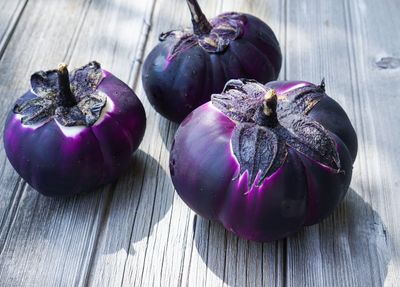Barbarella Eggplant Info
Eggplant ‘Barbarella’ is a variety of eggplant that may also be sold as Violetta di Sicilia. This variety originated in Italy. Barbarella eggplant produces five to six, medium-sized, one-pound (0.5 kg.) fruits on plants that grow about 24 inches (61 cm.) tall. These fruits have dark purple skin, with white to light pink hues, outlining their dark purple, lightly spiny calyx. The fruit is round, like a grapefruit or softball, with deep grooves and has creamy white flesh. The 4- to 6-inch (10-15 cm.) diameter eggplants produced on this plant reportedly have an excellent, sweet, slightly nutty, flavor. It can be grilled, fried, or sautéed for use in classic eggplant dishes, such as eggplant parmesan. Barbarella is also ideal for roasting whole or hollowing out for use in stuffed eggplant dishes. Eggplant is high in dietary fiber. It is beneficial for heart health and maintaining healthy cholesterol levels. The skin of eggplant also has natural antioxidant and anti-inflammatory properties. However, eggplants have a short storage life and are best used fresh or stored for only a couple of days in a cool dry place. When stored in the refrigerator, eggplants will quickly develop brown, water-soaked lesions.
Growing Barbarella Eggplants
Eggplants are extremely sensitive to cold and frost. Their seeds should be started indoors 6-8 weeks before the last expected frost date in your location. Even the seeds will not germinate if it is too cold. It may be necessary to use a seedling heat mat when growing Barbarella eggplants from seed. Do not place eggplant plants outdoors until spring temperatures have steadied and be sure to harden off young plants before planting them in the garden. Grow eggplant Barbarella plants in full sun, infertile, well-draining soil. Plant eggplant successively to extend the season. Eggplant ‘Barbarella’ matures in about 80-100 days. Fruits are harvested when they are about 4-6 inches (10-15 cm.) in diameter. It is also important to note that eggplant is in the nightshade family and is susceptible to all the same diseases as other nightshades, such as tomatoes. With all nightshades, crop rotations with plants not belonging to the nightshade family is the best defense in preventing disease.
